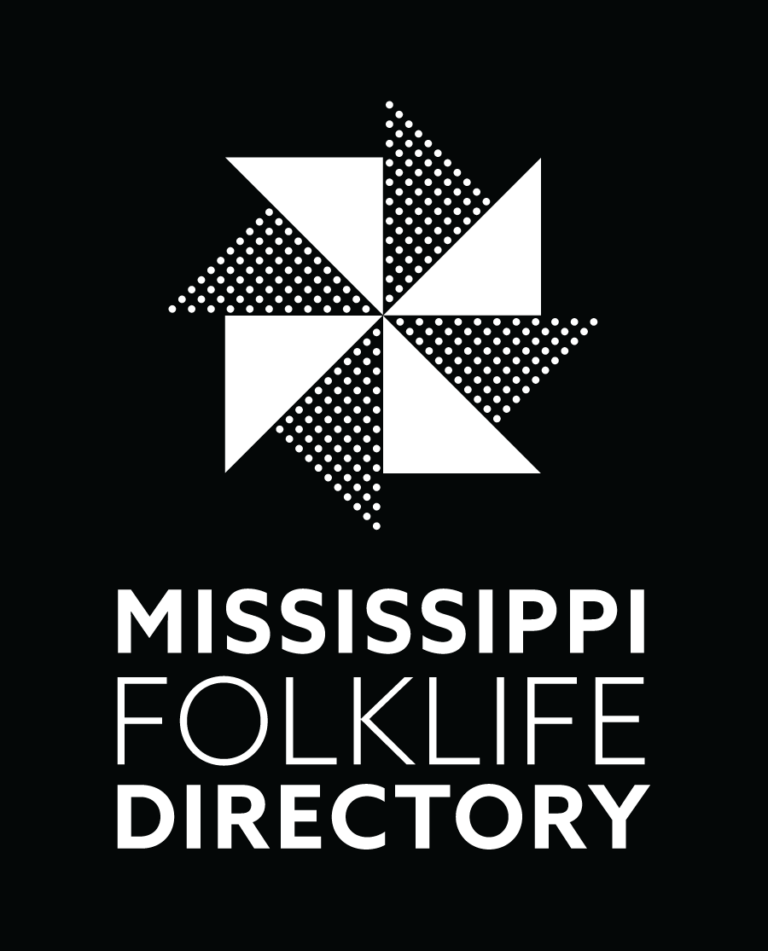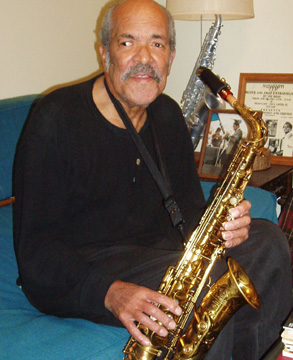Charles Fairley, Jr., was born in 1932 on the Mississippi Gulf Coast in Moss Point. He began playing saxophone at eight years old and received his first instrument, an alto saxophone, from his paternal uncle Ollie John “Boss” Tatum, who had worked in minstrel shows with artists including Bessie Smith. Fairley later received a tenor saxophone from his father, Charles, Sr.
Fairley recalls that the music scene in Moss Point took off in September of 1943, when a music teacher, Professor Jefferson, started a band (which included Fairley) at the Magnolia School. The group, Professor Jefferson and His 14 Swingsters, performed at local concerts and parades and played at clubs in Moss Point including the Knights of Pythias Park. At that venue, Fairley witnessed performances by groups including New Orleans-based orchestras led by Dave Bartholomew and Paul Gayten, and the Rhythm Aces from Bogalusa, Louisiana.
In the mid-’40s, Fairley lived for two years in Chicago, where he studied music and machinery, a skill he would apply two decades later. He returned to Moss Point, where he performed in local bands and graduated from high school in 1950. In November of that year, he made a successful audition in New Orleans with the band of Otis Ducker and played his first gig at the famous Dew Drop Inn backing blues shouter Big Joe Turner.
Fairley soon became a staple of the New Orleans R&B scene, using the Dew Drop Inn as his base. For two years beginning in 1953, he served in the military at Fort Lee in Virginia and performed in bands six nights a week both on base and in the greater Richmond area.
In New Orleans Fairley worked with bands led by Guitar Slim, Boots Alexis, Al Miller, and Joe Jones, with whom he worked for two years. He also led his own group, which featured vocalist Helen Marina. These groups, usually booked by Percy Stovall, traveled extensively to military bases and Chitlin’ Circuit venues across the South. For nearly two years he worked with trumpeter Melvin Lastie at the Showbar on Bourbon Street, working six nights a week at a 3:15 am to 7:15 am gig that served as a popular jam session for local musicians. Although several other saxophonists dominated local recording sessions, Fairley appeared on records by artists including Eddie Bo, Art Neville, Huey “Piano” Smith, Mickey and Sylvia, Bobby [Hebb] and Sylvia, and the Mexican singer Tito Guizar.
In 1961 Fairley moved to Jackson to study music, and over the next seven years played with local artists including Sam Myers, Joe Dyson, Willie Silas, Jimmy King, Tommy Tate, and the Holly brothers (including Sherill, Bernard, and Kermit Holly, Jr.). During the ‘60s he spent much of his time on the road with soul artists Ted Taylor, Otis Redding, and Joe Tex. Fairley appeared on Tex’s hit single “Show Me” and toured nationally with Redding for nine months, playing venues including the Apollo Theater, and traveling to France.
In 1968 Fairley moved back permanently to Moss Point, and for the next 31 years worked in the shipbuilding business, initially as a fitter and later in office jobs. He continued to work as a musician four or five nights a week, performing with New Orleans R&B-oriented acts including Charlie V and the Personalities, The Night Riders, and Ray Fournier. He also continued to play occasionally with his old musical associates from Jackson. In the late ‘70s, Fairley recorded with the Southern rock group Sea Level, which included Allman Brothers drummer Johnny Lee “Jaimoe” Johnson, an Ocean Springs native, and Fairley’s “musical stepson.”
In 2003 Fairley was officially recognized by Moss Point with a key to the city, and the Ina Thompson Moss Point Library created the Charles Fairley Music Collection in his honor.
–Scott Barretta

